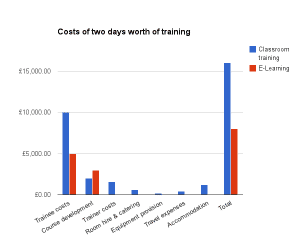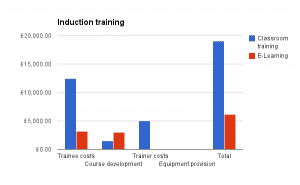As the Internet and computers have grown in prominence, we’ve increasingly found ourselves moving our learning online, but there are still a lot of companies who insist on putting all of their training into the physical space. Naturally, we at Webanywhere are huge advocates of improving training provisions using online methods – though not at the total expense of classroom-based learning! “Blended learning” is very much the way forward at the moment, and when you look at the costs and benefits it’s clear why.


This is not to say, though, that the only benefits are material in terms of savings – using a blended learning approach can help your employees to retain information for longer, its wider range of learning styles appealing to different people’s personalities3. Perhaps some work better through video training, some might prefer to read sheets while others could prefer interactive quiz/form-based learning. Additionally, revision of information at intervals has been proven to improve memory and retention – with an LMS you can simply go over the information again rather than holding another costly seminar or training session.
Not only can you help your employees to learn better with an online approach, you can see for yourself the benefits through tracking their progress. Totara, for example allows you to see how much of a course an employee has completed as well as providing data for you to graph and track. This benefits in the area of lifelong learning – a single instructor-based session ends when staff leave, and tracking its progress is difficult to say the least, while online it’s simply a matter of checking profiles.
These are just a few of the many ways your organisation can benefit from embracing e-learning. Get involved with the future of training and teaching, contact us today to find out how we can help your organisation implement a robust, world-standard LMS.

